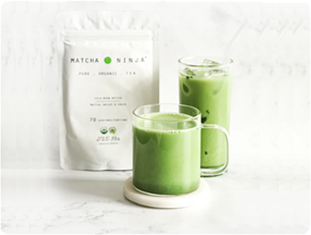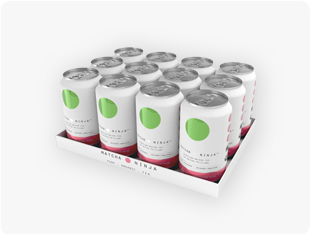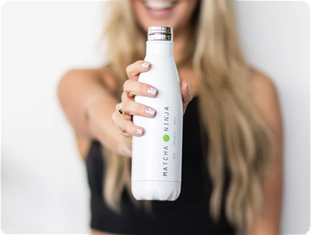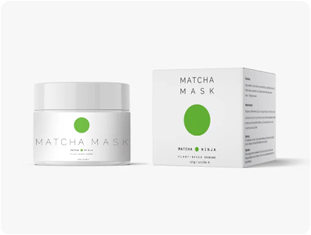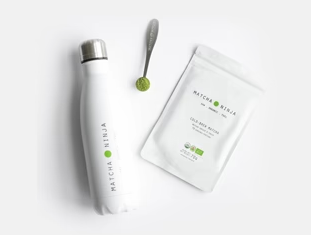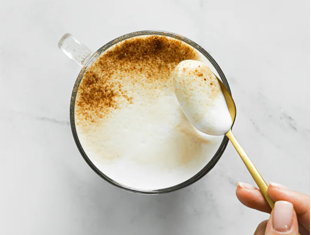With the Western world's ever increasing interest in all things Matcha, we thought it would be a good idea to dispel some of the common misconceptions that many people have surrounding this incredibly beneficial product. So, to help our fellow matchgicians out, here are five of the most common myths and half-truths we hear all the damn time!

1. Greener is Better
One of the first things we hear when we discover matcha is the colour rule. The rule says you can tell good matcha from bad matcha by its colour. The greener the matcha, the better the quality. There is some truth to this, however, a more accurate representation of the rule would be "the greener the matcha, the better the quality, IF you are comparing ORGANIC matcha". The keyword being "Organic". You see, when matcha is not organic, the producer is free to use fertilisers, pesticides and herbicides that can help produce a greener output by artificially raising the production of chlorophyll in the plant. This sounds great but the thing with Matcha is that because it's grown in the shade for a month and is not able to rely on the sun for energy, it's forced to soak up all the nutrients (and pollutants) in its environment. This, combined with the fact that you're consuming the entire leaf, means your matcha must be as pure as possible. If the colour of your matcha is the only rule you go by, and you end up comparing the colour of organic matcha to the colour of non-organic matcha, you're comparing apples and oranges (and probably contributing to future health issues). Don't be the apple/orange charlatan....
Verdict: Half-truth

2. If it's not Japanese, it's not good Matcha
This is like saying if your car is not German, it's a dud. Sure, Germany has a reputation for producing well-made cars, just like Japan has a reputation for Matcha, but does that mean if it's not Japanese it's not the highest quality? The answer to this is a definitive and resounding NO. There are many factors that determine whether matcha is high quality, and it's origin is not one of these. In fact, matcha did not even originate in Japan, it was first discovered and ritualised in China, while the Japanese had to wait over 200 years for the matcha craze to reach their shores. So if you're serious about only consuming the cleanest and purest matcha, don't look for "Made in Japan", this is irrelevant. Instead, ask the company what their matcha is tested for and if you can see a copy of their test results. Because matcha pulls a lot of nutrients from it's surrounding environment, it also sucks up heavy metals, chemicals and radiation like a sponge. The best matcha will be 100% organic, heavy metal tested and radiation free.
Verdict: Myth

3. Matcha has 137 times as many antioxidants as regular
green tea
We must admit, this one bugs us a little. Sure, it's a great selling point for Matcha - 137 times is a sexy number - but where does this figure come from? After a little digging you'll quickly discover the origin of this claim. The study that Matcha companies, bloggers and health writers alike are all referring to is a 2003 study from the University of Colorado titled "Determination of catechins in matcha green tea by micellar electrokinetic chromatography". The study itself is not misleading, but the cherry-picking of its findings certainly is. In fact, you don't even need to read past the short abstract of the study that states "Using a mg catechin/g of dry leaf comparison, results indicate that the concentration of epigallocatechin gallate (EGCG) available from drinking matcha is 137 times greater than the amount of EGCG available from China Green Tips green tea,...." The study expressly states that the comparison was between matcha and Green Tips green Tea, which is a high volume, commercial brand sold in Starbucks. It also expressly states that "....and at least three times higher than the largest literature value for other green teas.". So there you have it, the very same study used to make the (in)famous 137 claim, is also the same study that clarifies the real figure as being "....at least three times higher..." . Doesn't sound as impressive as 137 though.
Verdict: Half-truth (on a technicality)

4. Drinking matcha at night will keep you awake
Matcha contains caffeine. Caffeine keeps us awake. It makes sense, and we are asked about caffeine in our matcha all the time. Let's break it down further; a 1gram serve of Matcha contains around 1/4 the caffeine of a small, single shot of espresso coffee. There are some people who can drink a small espresso coffee at night and have no troubles sleeping. That means they could have 4 cups of matcha and have the same effect (we'll ignore the fact that they'd be up peeing all night). If you're someone who couldn't have a coffee at night for fear of not being able to sleep, how would you be on half a cup? How about 1/4 cup? There is one other factor to take into consideration, and it's one that matcha drinkers everywhere know about. It's the calmness you get from the high levels of L-theanine in matcha. The L-theanine works with the caffeine to ensure you don't get a spike of energy, but rather a nice calming energy that has helped Zen Buddhists meditate for over 1000 years. Try meditating on coffee! Go on, we'll wait....
Verdict: Half-truth

5. You should only buy Ceremonial Grade Matcha
This is something you might hear from companies that only sell ceremonial grade matcha (like us). Sure, if you're drinking matcha for the taste and health benefits, you can't get better than ceremonial grade. But there is a reason matcha also comes in the cheaper Everyday and Culinary grades, and it's not just so cafe's can save money when selling matcha to Hipsters and Yogis. The main benefit of the cheaper grades of matcha is when you are cooking using a high heat (e.g. baking). Using a high heat will kill a lot of the nutrients in your matcha. It will still taste like matcha, but you won't be benefitting from the higher nutrient content in ceremonial grade. So, if saving money is your thing, stick to lower quality matcha when cooking in high heat.
Verdict: Myth
